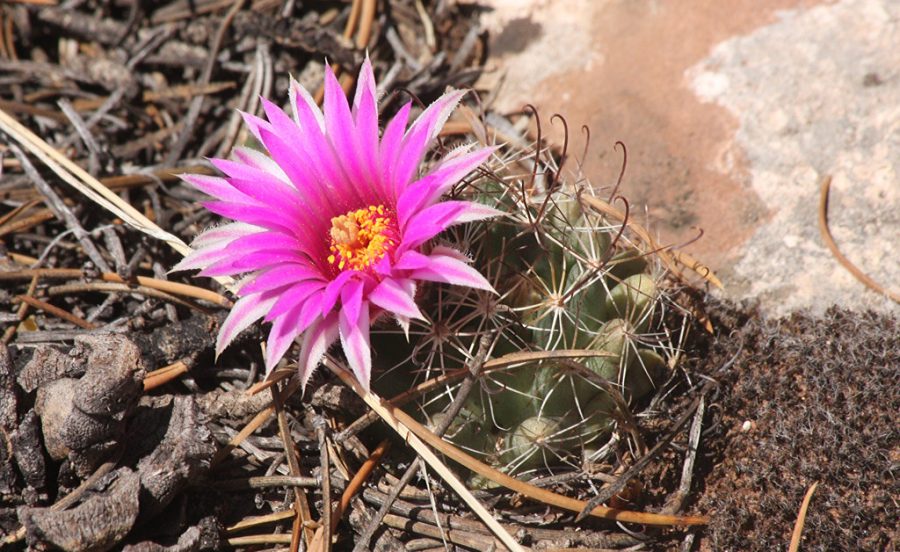Starr: Utah’s Environment Should Not Pay the Price of Off-Road Recreation
September 22, 2019
The Factory Butte Special Recreation Management Area, a lesser-known public land treasure of Utah, is facing challenges from the Bureau of Land Management, the very agency which is supposed to be in charge of its protection. In 2006, the BLM made the decision to disallow off-highway vehicles in the Factory Butte area near Hanksville, Utah. That protective order was recently reversed in a decision that now threatens many of the area’s plants, soil and wildlife. Other recreational activities like hiking and sightseeing have also been compromised by the consequences of OHV-related public land mismanagement. The agencies in control of Utah’s public lands must step up and responsibly consider these unintentional consequences to both the ecosystem and human connections to the land.
Earlier this spring, the Richfield Field Office released a memo addressing the reversal of the 2006 decision. Joelle McCarthy, the field manager, stated that the conditions which led to the OHV restriction had improved and that enough improvement had been made for the office to decide that it would be okay to lift the ban. This reasoning is fairly obvious — the area’s conditions would be improved once disturbances like OHVs were limited enough for the land to recover.
If stabilizing the ground and ecosystem is a management goal, it makes little sense to allow one of the main environmental disruptors back onto the land once it begins to heal. This recent decision would be similar to a person smoking cigarettes, becoming sick, stopping the act of smoking, feeling better and then deciding to pick back up the harmful practice once more. It is not as if the vehicles of 2019 are markedly less destructive than those of 2006. Richfield should not go back to these old, harmful practices. It should instead double down on conservation, promoting less-impactful recreation that ensures a future of enjoyment for all.
Much of the 2006 decision had to do with management problems related to threatened and endangered species, specifically the Wright Fishhook Cactus, which is only found in four locations on the Earth — Utah’s Emery, Sevier, Wayne and Garfield counties. This rare cactus was listed as an endangered species in 1979, and it unfortunately has remained endangered. The cream-colored cactus flowers that pepper Utah’s desert soil might be a low priority for some, but environmental groups like the Southern Utah Wilderness Association and the Natural Resources Defense Council are passionately fighting for their preservation.
Not only do these organizations advocate for the ecosystem housed in the Factory Butte area, but they are also protecting future recreational opportunities and the overall value of conserving Utah’s public lands. The groups’ lawsuit challenges the BLM’s rescindment on OHV restrictions, which opens 5,400 acres to riders through a process that did not follow federal law and environmental testing policies. These environmental concerns are valid and both interests deserve a fair balance. The efforts of these groups to stand up against the BLM’s latest decision should be loudly applauded.
According to McCarthy, the Richfield Field Office’s management plan to maintain species wellness while opening up more intense recreational opportunities meets “all of the necessary criteria.” However, there are no specifics in the memo nor the press release on how the habitat will be protected and monitored going forward. The “necessary criteria” appears to be short of what the Factory Butte area deserves.
Dust storms, erosion, species degradation and poor air quality are a few of the unintentional harms which can develop from weighty vehicles squashing biological soil crusts. Deseret soil takes nitrogen out of the air and stores water which helps prevent runoff. These benefits must be at the forefront of the criteria used by field offices. While it may seem as if layers of soil and tiny organisms are inconsequential in the grand scheme of things, it’s crucial to remember that everything is part of the natural system and we humans will feel impacts when that system is distressed.
An “unparalleled riding experience” for OHV lovers should not be prioritized over the soil crust, thriving and endangered species, ecosystem health or other human recreational activities that take place in Factory Butte. Of course, Utah’s public lands will always be impacted with general visitation, hikers wandering and photographers capturing the unique, springtime blooms of Wright Fishhook, so long as they’re able to grow and flourish. Because of this, the agencies in charge of these unique areas need to better assess the damage to these ecosystems, and not equate the impacts of someone on foot with a camera to someone traveling at high speeds in heavy vehicles, gouging and injuring the land.








